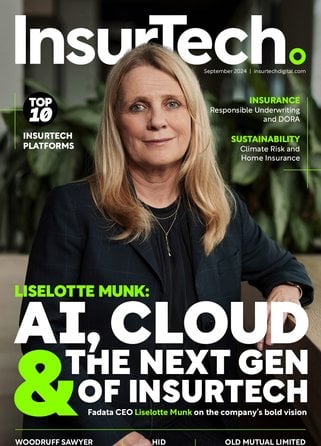SAS: Insurance Sector Faces $1.8tn Protection Gap Challenge

Global insurance executives believe the industry has an ethical obligation to address the US$1.8tn protection gap, according to new research from Economist Impact and SAS, a data analytics and artificial intelligence software provider.
The survey of more than 500 insurance leaders across 17 countries found that 78% acknowledge this responsibility to reduce the difference between insured and uninsured losses across life, health, natural catastrophe and crop insurance sectors.
Technology emerges as the primary avenue through which insurance firms plan to tackle this shortfall. Three-quarters of executives (76%) identify the protection gap as a significant commercial opportunity as climate change-related losses continue to mount.
Climate risk and uninsured losses
In 2024, catastrophic environmental events including fires, floods, storms and earthquakes resulted in US$368bn in global economic losses. The research highlights that 60% of these losses remained uninsured, with vulnerable communities in high-risk markets particularly affected.
The protection gap extends beyond property and casualty sectors to include health and life insurance for underserved populations, a divide expected to widen as climate change progresses. Extreme temperature events are projected to disproportionately impact children, elderly people and socioeconomically disadvantaged groups.
"As financial first responders, insurance leaders understand that shifting from detecting and repairing after catastrophe to predicting and preventing is critical to addressing increasing climate risk and insurance affordability challenges at hand," says Sean Kevelighan, Chief Executive Officer of the Insurance Information Institute.
Barriers to progress
Insurance executives identified several internal obstacles limiting their ability to respond effectively to industry trends. These include:
Consumer needs comprehension (76%), understanding of external environment (75%), and outdated technology systems (75%). Operational silos (74%), slow innovation rates (74%) and resource limitations (73%) were also cited as significant barriers.
Franklin Manchester, Principal Global Insurance Advisor at SAS, notes: "Three-quarters of insurance leaders identify lack of trust in the industry as a significant barrier to closing the protection gap, and it's no wonder why. As carriers retreat from disaster-prone areas and data privacy violations are revealed, insurers must act decisively to regain consumer and regulator confidence."
Technology-led solutions
The research identified four principal approaches to addressing the protection gap, with technological solutions featuring prominently.
"Three-quarters of insurance leaders identify lack of trust in the industry as a significant barrier to closing the protection gap, and it's no wonder why"
Using technology to make insurance products more affordable was cited by 48% of respondents, with 40% of organisations currently implementing such measures.
Developing innovative insurance products such as parametric insurance – which pays out based on predefined triggers rather than assessed losses – or microinsurance was mentioned by 42% of executives, with similar implementation rates.
Regulatory engagement through industry organisations (38%) and leveraging data for improved risk assessment and product design (39%) rounded out the top strategies. These approaches are currently being implemented by 28% and 32% of respondents' organisations, respectively.
"Insurance has always been about building resilience, and today, the stakes have never been higher," says Sabine VanderLinden, Chief Executive Officer and co-founder of Alchemy Crew, an innovation consultancy focused on insurance. "With a $1.8tn global protection gap and mounting challenges, from climate change to fraud and cyber threats, the industry stands at a crossroads."
Economist Impact, a research division with 75 years of policy research experience across 205 countries, partnered with SAS to produce the report "Revealing the paths to 2040: a global industry survey". The findings are available through an interactive experience on the SAS website.
The World Economic Forum, The Geneva Association, Economist Impact and SAS plan to explore the research further in a webinar scheduled for 6 March.
"The future belongs to those who harness innovation – AI, data and emerging frontier technologies – to make insurance not just more accessible but more equitable," adds VanderLinden.
Make sure you check out the latest industry news and insights at InsurTech and be part of the conversation at our global conference series, FinTech LIVE.
Discover all our upcoming events and secure your tickets today.
InsurTech is a BizClik brand




